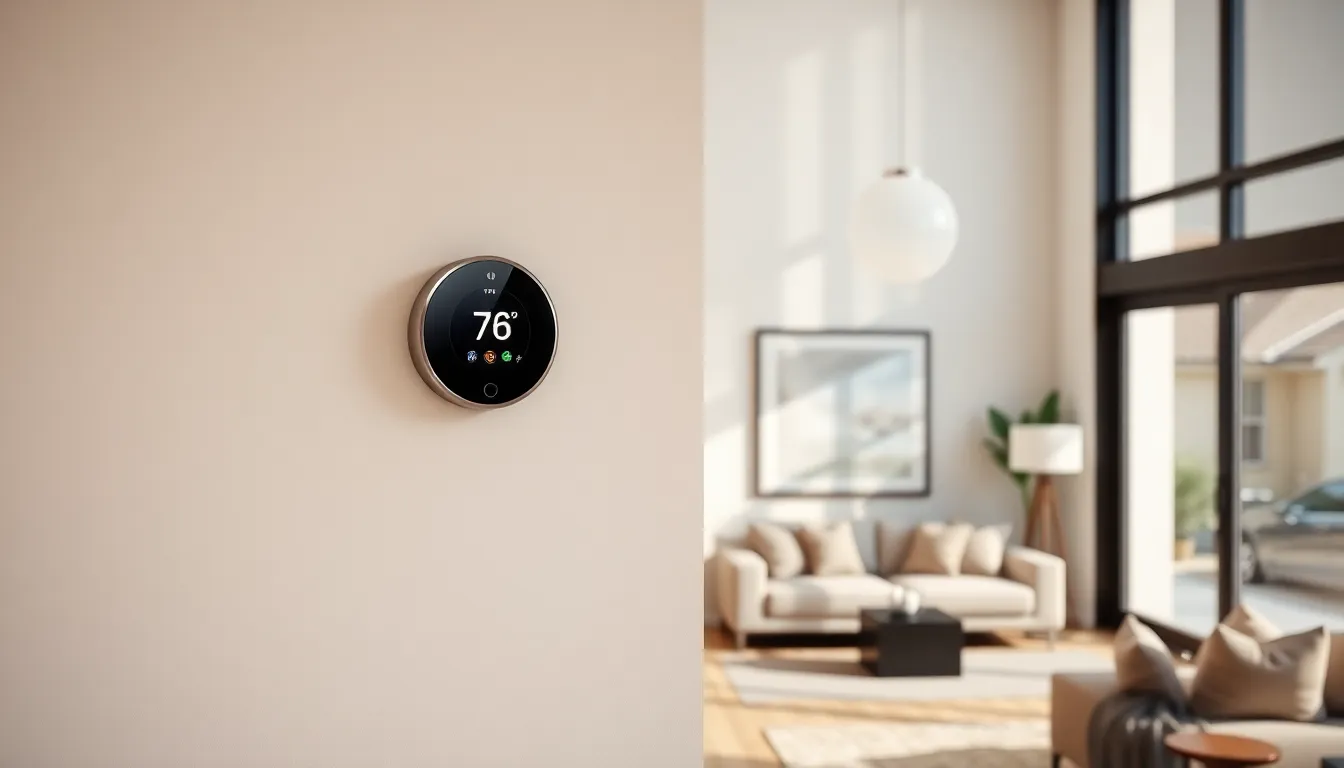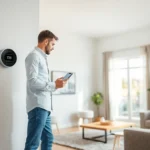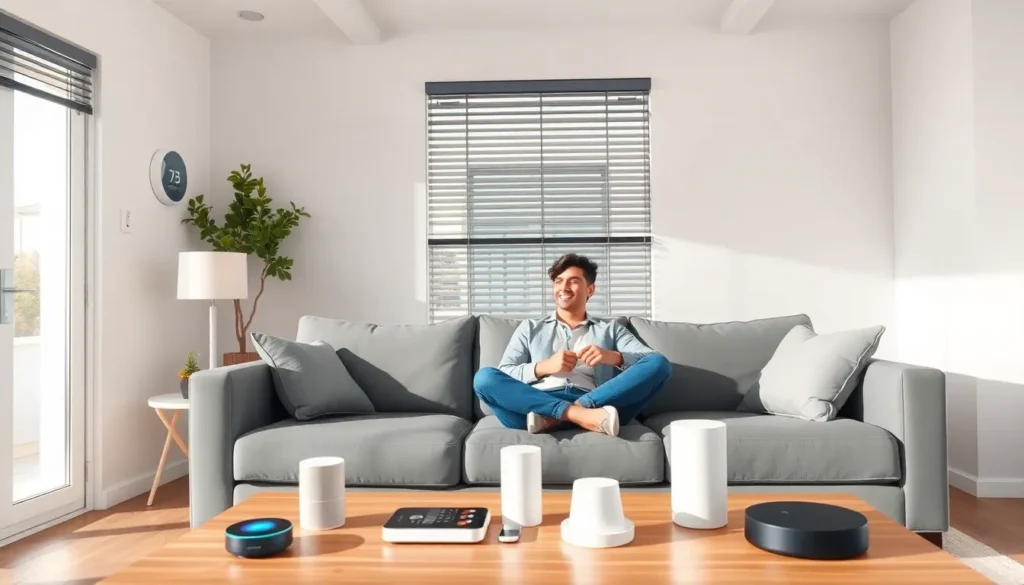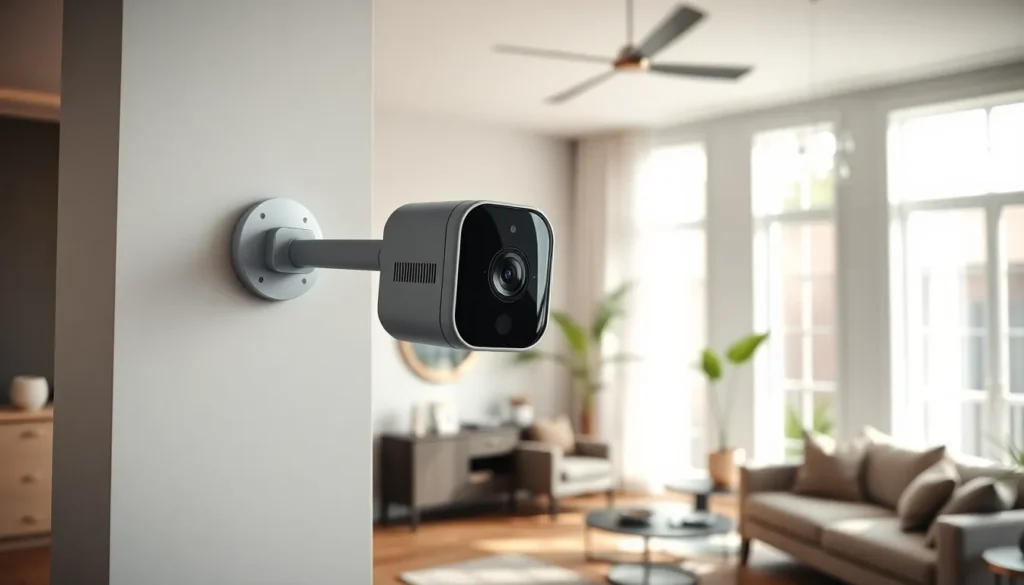In a world where even toasters are getting smarter, why should your thermostat be left behind? Setting up a smart thermostat isn’t just about keeping your home cozy; it’s about embracing the future and saving some serious cash on energy bills. Imagine controlling your home’s temperature from your couch—or better yet—from the beach while sipping a piña colada. Sounds dreamy, right?
Overview of Smart Thermostat Setup
Setting up a smart thermostat requires careful planning. Users must first ensure compatibility with their existing heating and cooling systems. Identifying the type of system—such as central heating, radiators, or heat pumps—determines the appropriate thermostat model.
Next, gathering the necessary tools simplifies the installation process. Users typically need a screwdriver, drill, and voltage tester. Confirming the power is off at the circuit breaker crucially prevents electrical accidents.
Mounting the thermostat on the wall comes next. Installing the base plate ensures level alignment. After attaching the base, connecting the wires according to the manufacturer’s instructions follows. Color coding typically aids in identifying wire functions, including power, heat, and cool signals.
Configuring the thermostat software marks the final step in the setup process. Connecting to Wi-Fi allows remote access through a mobile app. After signing in, users can customize preferences for energy-saving modes and scheduling.
Consideration of ideal placement also maximizes the thermostat’s efficiency. Positioning away from direct sunlight and vents prevents inaccurate readings. Regular updates of the thermostat software ensure access to the latest features and security enhancements.
Each step in this process plays a vital role in achieving optimal performance. Using this method guarantees effective temperature control and the potential for significant energy savings.
Benefits of Smart Thermostats

Smart thermostats provide significant advantages for homeowners, enhancing both comfort and technology. These devices improve energy efficiency, promote cost savings, and offer convenience in managing home climates.
Energy Efficiency
Smart thermostats optimize energy consumption through learning algorithms. They can adjust settings based on user habits, ensuring efficient usage while maintaining comfort. Most of these devices provide insights into energy usage patterns, allowing users to identify and reduce waste. With remote access features, users can control their home’s temperature from anywhere, ensuring systems operate only when needed. By automatically adjusting heating and cooling schedules, smart thermostats significantly enhance overall energy efficiency.
Cost Savings
Cost savings present a compelling reason for installing smart thermostats. Users experience reductions in energy bills due to optimized heating and cooling schedules. Many homeowners report savings of 10-30% on their energy costs after installation. Smart thermostats allow remote temperature adjustments, preventing unnecessary energy usage when no one is home. Incentives from utility companies often exist for upgrading to these energy-efficient options. Over time, the initial investment pays off through substantial long-term savings, making it an economical choice for many households.
Types of Smart Thermostats
Smart thermostats come in various models, each designed to meet different needs and preferences. Understanding the distinct types aids in choosing the right one for a home.
Wi-Fi Enabled Thermostats
Wi-Fi enabled thermostats connect to the internet, allowing users to control their home’s temperature remotely through mobile applications. These models provide real-time updates and alerts, ensuring users stay informed about their energy consumption. Many users appreciate the ability to integrate these devices with smart home ecosystems, enhancing overall home automation. Popular options in this category provide scheduling features, enabling customization tailored to daily routines. Examples include the Nest Learning Thermostat and Ecobee SmartThermostat, which offer advanced functionalities and energy-saving designs.
Wired vs. Wireless Options
Wired thermostats connect directly to the home’s HVAC system, providing reliable performance without concerns about connectivity. These models often feature a consistent power source and straightforward installation. Wireless options, by contrast, offer more flexibility in placement since they don’t require direct wiring. Users may choose wired models for reliability in homes with stable electrical systems. In contrast, wireless versions appeal to those seeking ease of installation and mobility, especially in rental properties or spaces where retrofitting wiring poses challenges. Each type has unique advantages worth considering when selecting a smart thermostat.
Steps to Set Up a Smart Thermostat
Setting up a smart thermostat involves specific tasks to ensure optimal performance and efficiency. Follow these essential steps to streamline the process.
Choosing the Right Location
Selecting an appropriate location is crucial for accurate temperature readings. Positioning the thermostat on an interior wall within five feet of the average height enhances its effectiveness. Avoid placing it near drafts, direct sunlight, or heat sources, as these factors can skew readings. Evaluating existing furniture layout ensures the thermostat receives unobstructed airflow. Smart thermostats perform best in a central area, where they can capture the most accurate ambient temperature.
Wiring and Installation Process
Wiring setups vary, so refer to the manufacturer’s instructions for precise guidance. First, turn off power to the HVAC system for safety. Next, detach the old thermostat and label the wires to avoid confusion. Using a screwdriver, securely attach the new thermostat base to the wall. Connect the labeled wires according to color codes, ensuring a snug fit to prevent disconnections. Once wired correctly, mount the thermostat faceplate, restore power, and check for functionality. Configuring the software through a mobile app follows the installation for remote access and personalized settings.
Troubleshooting Common Issues
Smart thermostat users often encounter issues during setup or daily use. Understanding common problems helps resolve them quickly.
Wi-Fi Connectivity Problems
Users may experience connectivity issues if the thermostat doesn’t link to the home network. Checking the router’s placement often resolves weak signals. Ensure the Wi-Fi network is operating on a frequency compatible with the thermostat, typically 2.4 GHz.
Incorrect Temperature Readings
Some devices display inaccurate temperatures. It’s essential to check the thermostat’s placement first. Avoid placing the thermostat near heat sources or drafts, as these interfere with readings. Calibrating the thermostat through the app often corrects discrepancies.
Battery Level Alerts
Smart thermostats often send alerts when battery levels are low. Users should consult their device instructions for battery replacement steps. Regularly checking battery status through the app helps prevent unexpected shutdowns.
App Sync Issues
Occasionally, users may find the mobile app fails to sync with their thermostat. Restarting both the thermostat and the smartphone usually resolves this issue. Ensuring that both the app and the device firmware are updated can prevent further sync problems.
Unresponsive Controls
If the thermostat’s touchscreen becomes unresponsive, a simple restart is often effective. Holding down the power button for a few seconds typically restores functionality. If issues persist, contacting customer support may be necessary.
Overheating or Overcooling
Thermostats occasionally fail to maintain the desired temperature. Users should check for wiring mistakes or ensure that the system settings are correctly configured in the app. Adjusting the heating and cooling schedules based on usage patterns optimize performance.
Each of these common issues can impact the performance of a smart thermostat. By addressing them methodically, users maintain optimal comfort and efficiency in their homes.
Setting up a smart thermostat is a straightforward process that can lead to significant benefits in energy efficiency and cost savings. By choosing the right model and following the installation steps carefully, homeowners can enjoy enhanced comfort and convenience. The ability to control home temperatures remotely and the energy-saving features make smart thermostats a valuable investment. Regular maintenance and software updates ensure these devices continue to perform optimally. Embracing this technology not only modernizes a home but also contributes to a more sustainable lifestyle. With the right setup, anyone can transform their living space into an energy-efficient haven.













